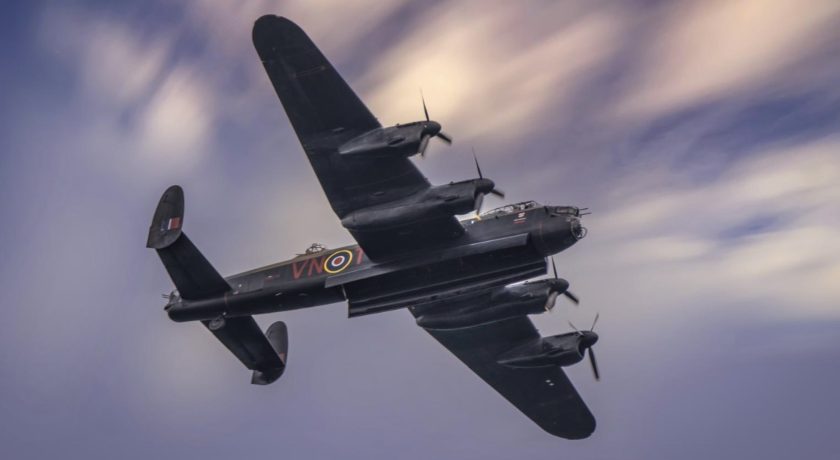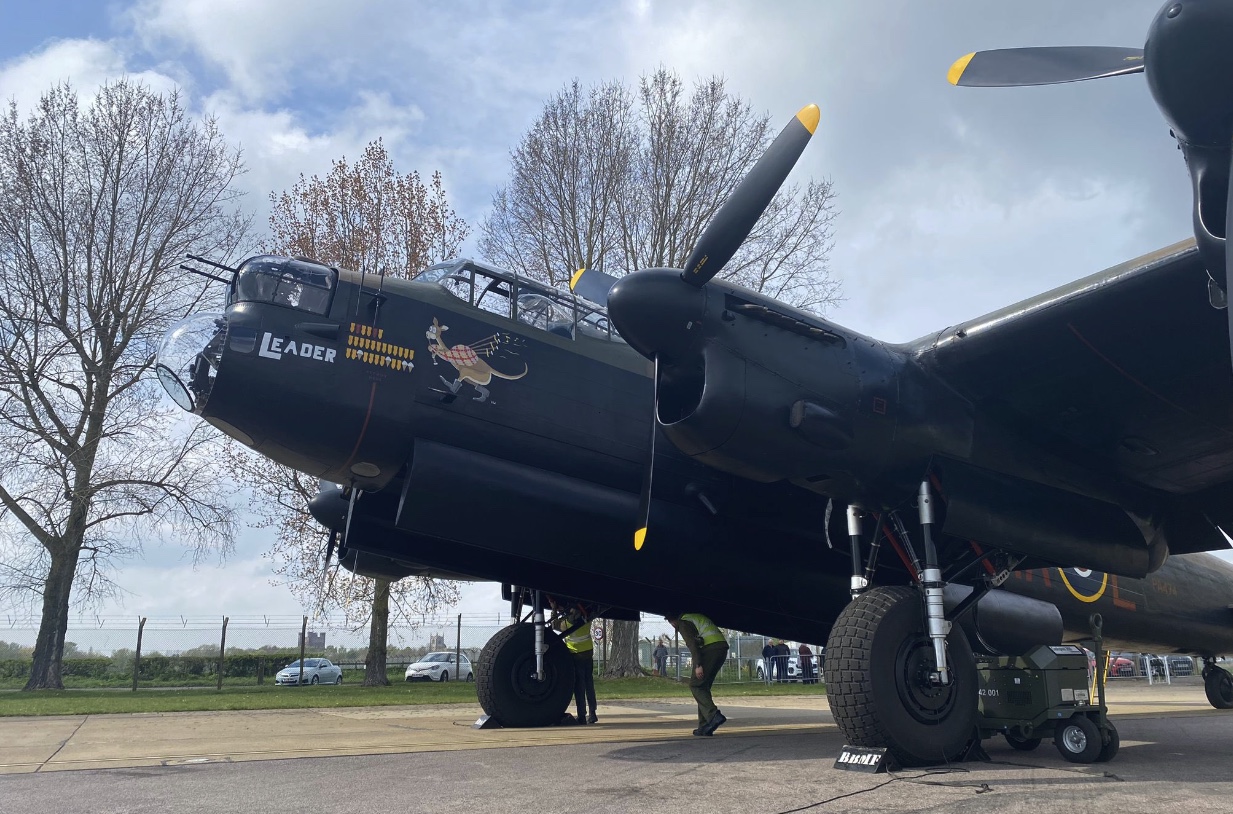All about the Broughton built Lancaster Bomber performing at Rhyl airshow this weekend

A Battle of Britain Memorial Flight (BBMF) Lancaster Bomber flew low over Flintshire today en route to Rhyl Airshow where it will perform two displays on the Saturday and Sunday.
The Avro Lancaster was the most famous and successful RAF heavy bomber of World War Two.
Of the 7,377 Lancasters built, only two remain airworthy today.
One of these, the Lancaster PA474, was built at the Vickers Armstrong Broughton factory at Hawarden Airfield, on 31 May 1945, just after VE day.
The other is owned and flown by the Canadian Warplane Heritage Museum.
Although the war in the Far East ended before she was deployed, PA474 did not take part in any hostilities and has since had a varied and interesting history.

PA474 is now operated by the Royal Air Force Battle of Britain Memorial Flight as a tribute to all members of Bomber Command during the Second World War.
Design
Design and Development The Avro Lancaster resulted from design work undertaken by Roy Chadwick and his Avro team to overcome the problems experienced with the twin-engined Manchester bomber.
The prototype made its first flight in January 1941, and with its impressive performance and excellent flying characteristics, it soon established its superiority over other allied four-engined bombers operating in Europe.
During the last three years of the Second World War, the Avro Lancaster was the main heavy bomber used by Bomber Command to take the war to the heartland of Nazi Germany.
The industrial and military organisation needed to build and operate the Lancaster was massive. Six major companies built 7,377 aircraft at ten factories on two continents; at the height of production, over 1,100,000 men and women were employed working for over 920 companies. More service personnel were involved in flying and maintaining it than any other British aircraft in history.
The Lancaster’s operational career is littered with impressive statistics, but it is worth remembering that the average age of the seven-man crew was only 22 years.
They endured danger and discomfort, and many showed great courage in continuing to fly knowing the odds against survival were high.
Bomber Command suffered the highest casualty rate of any branch of the British services in World War Two.
PA474 History
PA474 was built as a B Mk 1 (B1) and was to be part of the British Tiger Force for strategic bombing in the Far East.
Following the end of the war with Japan, the aircraft was not needed and entered storage. It was later assigned to Photographic Reconnaissance duties with 82 Squadron in East and South Africa and then loaned to Flight Refuelling Limited to be used as a pilotless drone.
However, an Avro Lincoln was used instead, and PA474 was transferred to the College of Aeronautics, Cranfield, Bedfordshire, for trials on the Handley Page laminar flow wing.
In 1964, PA474 came under the control of the Air Historical Branch for possible display in the proposed RAF Museum. During this time, the aircraft appeared in two films: Operation Crossbow and The Guns of Navarone.
It was then stored at Wroughton and Henlow before being restored to wartime standard, including refitting the front and rear turrets, at RAF Waddington in 1965.
PA474 was transferred to the Battle of Britain Memorial Flight in 1973. In 1975, a mid-upper turret was found in Argentina and fitted. During the winter of 1995, the Lancaster was fitted with a new main spar to extend its flying life.
On 7 May 2015, the aircraft suffered a fire in its starboard outer engine, but a safe landing was made at RAF Coningsby.
It flew again on 12 October 2015 after extensive work to fix the damage caused by the fire to the number four engine. It was later announced that, with ongoing maintenance, PA474 should still be airworthy until 2065.
Maintenance and Overhauls Minor and major maintenance and overhauls are completed by the Duxford based Aircraft Restoration Company (ARCo), most recently in 2021, where PA474 was with the historic aircraft specialists for 10 months.
The Avro Lancaster PA474 has had a remarkable journey from its inception during World War Two to its role today as a living tribute to the members of Bomber Command.
It stands as a testament to the courage and sacrifice of those who served and as a reminder of a critical period in world history.
Spotted something? Got a story? Send a Facebook Message | A direct message on Twitter | Email: [email protected] Latest News








